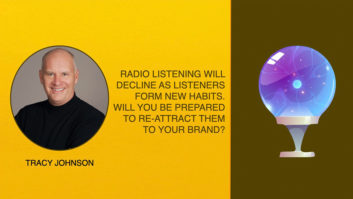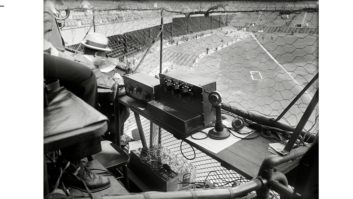The author is chairman of Digital Radio Mondiale.
In the last two decades of the digital revolution, radio has been written off several times. Currently we often hear that radio is the big survivor, just because it is still with us and comes with an illustrious, but nowadays double-edged, analog legacy.

There is something undeniably attractive about the live, one-to-one, intimate medium of radio. We all love it when a friendly voice magically introduces interesting issues, new and old music, connecting — over the airwaves — a small piece of metal with our own ears. Medical tests have proven that audio has a surprisingly and almost unexplained power of creating “a theater of the mind” that is strong and vivid.
But digital disruption has been with us for decades and radio has had to face the likes of
Pandora and Spotify, and increasingly, audio on the go. Zenith Media Consumption Forecasts 2018 predicts that 24 percent of all media consumption across the world this year will be mobile. This translates for radio in more podcasts consumed on the go. According to Edison Research an estimated 73 million of Americans aged 12 and above listen to podcasts monthly. This is roughly a quarter of the American population. There are of course many more radio listeners but still we should not overlook this figure.
Mobile also means in the car. Here radio has ruled supreme as it had the great advantage of being “automatically on.” Here too streaming is making inroads, as device connectivity becomes increasingly seamless and the big streaming providers focus on the car as their next target.
Radio is resilient but it is under siege. It has had to dig deep and throw into battle another great attribute that has now come to the forefront more than ever — flexibility.

Radio has adapted to the digital age with the clear result that the traditional distinction between AM and FM has disappeared. An AM radio program I was listening to in the car traveling past India Gate in New Delhi the other week sounded the same, or even better than FM. I listened for a while to the oldies station on DRM medium wave and switched to the pop station just by using the station name — no need to remember frequency, even if both stations were on the same, compressed one. Radio also has the capability of using what is already available on IP. While listening to the music in the car I could read the latest news on the dashboard and even get an email address if I wanted to contact the radio station on my mobile, since I wasn’t driving and my hands were free.
Choice may be the highlight of the internet but digital radio offers choice too. In digital, more stations can be accommodated with more niche programs and ad revenue streams possibilities. Newspapers have lost the most (in ad revenue and users) in the new digital age. Radio follows albeit by some distance. But being flexible and using the extra features of digital radio on both FM and AM allows radio to fight back and hold its ground. After all, you still need a kernel of live radio to spin out attractive podcasts.
Flexibility means more than just extra channels, extra content and extra ad spots. Digital radio like DRM can deliver emergency warning in case of disasters on the little receiver in the kitchen or in the car. The properties of digital radio allow any file, audio or otherwise to be transported over thousands of miles.
They can reach inhospitable areas like the Arctic, as recently documented by the United States Coastguard, which used DRM to send maps, other information in a safe and quick way. The transported files can be anything: news summaries, personal emails or little videos. This is how the German Navy keeps its personnel in all corners of the world connected to family and home. DRM can also be a pure carrier of radio programs that are converted back to analog FM, as done for the Pacific Islands listeners by the public broadcaster in New Zealand. And, experimentally, DRM can carry ads and short videos on screens placed in taxis and buses, even images without sound.
[Read: DRM Digital Radio Implementation Workshop Set for Malaysia]
Radio must be digital to be fully flexible and survive. If all the other platforms are using audio, radio is also using some of their other unique attributes. Digital radio can enhance audio but also serve communities in ways Marconi had never envisaged.
Digital radio gives you so much more and never asks your name — the one thing it does not offer though is big data and interference.







